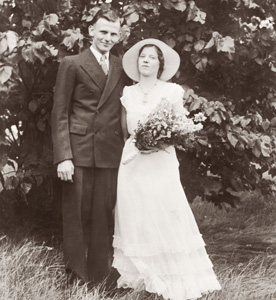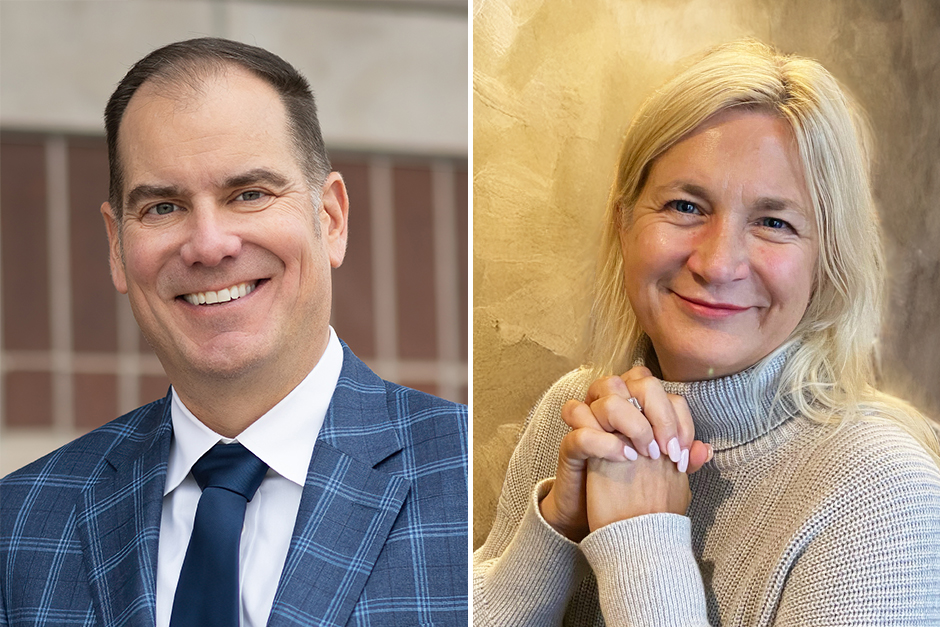Sandburg at Cornell
I first came to Cornell in the autumn of the year 1920. Carl Sandburg first came in that same year. There any resemblance ceases between us. I was from a small town in a part of the state of Iowa which contained nothing but even smaller small towns. Sioux City Iowa and Topeka, Kansas, where we occasionally visited relatives, were my idea of great metropolitan centers. They had streetcars. Sandburg at that time was a fifty-dollar-a-week man on a Chicago newspaper, a seemingly rough, tough man from a rough, tough city. But within him lived a poet, a spirit that had been expressing itself for some time in a new kind of verse.

This new poetry was duly noted by Professor Clyde Tull of the Cornell College English Department, who, unlike many teachers in many such small denominational schools as Cornell, was quick to take note of what was new and to investigate it. Thus it came about that Cornell [in Mount Vernon, Iowa] was the first academic institution to invite Sandburg to lecture and to read his poetry. He never forgot that it was Cornell that had first bestowed upon him recognition as a poet at a time when most schools and most critics denied that he was a poet at all. He wrote a certain what-have-we-here kind of thing, yes. But poetry, no. Cornell gave him, as far as its limited influence extended, an accolade of respectability.
I have never forgotten that first one of his many appearances at Cornell. He spoke from the stage in what we called the Upper Chapel. It had stained glass windows, a pipe organ, pews. It lacked nothing but an altar rail to be completely churchly in appearance. Nothing more incongruous than Carl Sandburg behind the podium on that stage with his rumpled clothes, his flopping bang of hair, his guitar can be imagined. Nor can anything more incongruous than this poet before this audience be imagined. This was 1920—the year that “Smoke and Steel” was copyrighted. Before that there had been “Chicago Poems” (1916) and “Cornhuskers” (1912). Yet few of his audience had ever heard of Sandburg. To most of them a poet was someone like, perhaps, Longfellow with a long white beard, who wrote poems nice and noble. Above all he was dead. All poets, like all novelists, were, as far as we knew, dead. That was the essential qualification: dead. And here was this odd-looking man with the odd look in his eyes, alive and talking about hogbutchers, painted women luring the farm boys, broken-faced gargoyles, hoodlums, killers. He could pair hyacinths and biscuits as equally relevant elements of poetry. Hyacinths we acknowledged as poetic, of course, but biscuits? No. Above all, he didn’t commit a single rhyme. So how could his stuff be poetry when everybody knew that anything that rhymed was poetry and anything that didn’t wasn’t?
War broke out on the campus. I recall most of one class hour spent on those biscuits. It is hard to comprehend our vehemence now, but it was, of course, the era in which so many little magazines “died to make verse free.” What seems now most incomprehensible of all is the fact that to so many Sandburg’s verse was incomprehensible. How could a little thing like “Fog” baffle anyone? What was its purpose they asked. We had got a little beyond saying, “What’s the moral?” but actually we were still looking for one.
In subsequent appearances, yearly over a long period, Sandburg insisted on moving to what we called the “lower chapel.” Much smaller than the large auditorium in which he had first spoken, it was a bare-bones sort of place used for extra-large classes, rehearsals of the oratorio society, pep meetings, and the like. It suited Sandburg much better. He stood or sat in a narrow space only a few feet away from the first row of the audience. Gradually a format for his readings evolved. First he read or recited from previously published poems. Then he told us what he was working on, and as a special bonus read a little from the current, yet unpublished opus. Next he took up his guitar and sang, in a not-very-melodious voice but one that exactly accorded with the man and his poetry and his appearance, songs from the “Song Bag” and other new ones he’d picked up in his travels. I recall that he found one in Mount Vernon that he’d never had before. This was the part that the audience liked best. Even so, in spite of his popularity at Cornell, I believe that there always remained for many of the succeeding generations of students, as for the first, an element of enigma about him. We had many poets coming to Cornell during those years, many distinguished novelists as well. I think only John Cowper Powys retained, like Sandburg, that element of enigma that teases the memory.
Vachel Lindsay enchanted us. He lured students to the stage to stamp out the rhythms of “The Congo” as he chanted it. Edna Millay was the goddess of the budding feminists. We could recite her poetry by the ream. We felt certain we had adopted her philosophy of burning our candle at both ends, but, alas, it was still lights out at ten o’clock for girls at Cornell. And we learned to say in our minds to discarded lovers, yes, I loved you Monday. So what? This is Tuesday. But again, alas, lovers were too few to be lightly discarded by anyone.
Those who got to know him best were those who, after the reading, repaired to the home of Toppy and Jewell Tull. There Sandburg sank into the huge easy chair by the fire, the only other human being as far as I know ever allowed to occupy that throne . There he stayed for hours, often most of the night. The girls had to go home at ten, but many of the boys, some town people, some faculty members, hung about as long as Sandburg held out. There was talk, argument, much telling of anecdotes, and every so often an interlude of more guitar playing. Toppy, himself a skilled guitarist, would join in. Songs from the “Song Bag” many students knew by that time, and they, too, would join in. It was a small room packed with students spilling over into the adjoining rooms on stools, on benches, on front and back stairs, on the floor interspersed with the several dogs kept by the Tulls, with the cats, one of whom derived her name from “Rootabaga Stories”. She was Tuesday-Evening-Just-Between-the-Twilight-and-the-Gloaming (a Maltese, naturally), Tuesday, for short, because she arrived at the Tull menage on a Tuesday. Over this pack the firelight flickered, fainter and fainter as it reached the outer edges.
For many years this event occurred annually. As each of his books appeared, Sandburg sent an autographed copy to Professor Tull as a gift. When the Depression got so bad that students simply could not buy a ticket for the reading, he came at least once for nothing. On another occasion a young woman, new in the English department, entered the Tull living room after Sandburg had settled into his chair. He gazed up at her. “But youUre beautiful,” he said. (This I recall—of course, because I was so jealous.) When he learned later that another girl was about to take a trip to England on the well-known shoestring, he handed out of his pockets the entire take of the evening, bills, jingling coins, all, and gave it to her to help with the expenses of the trip.
He was not always all jokes and geniality. In his poetry there was always the celebration of life but also the wry recognition of humanity’s foibles and follies and hatefulness. And of the grass that eventually covers all. In his social relations there was this same duality. He did not suffer fools gladly. At lunch one day a certain gushy lady managed to snag a seat right beside the celebrity. Wishing to open conversation, she cooed, “Mr. Sandburg, what would you do if your little boy said damn?” He looked at her coldly. “Teach him to say God-damn,” he replied and turned his back, thereby loosening the Bible belt another notch for the students listening.
By this time Sandburg was in full fame. It would have been hard to find a freshman who had never heard of him. Far from being baffled by “Fog” they could take on “Prufrock” without going pale. And Sandburg himself was deep into his Lincoln biography, his huge novel, his motion picture commitments. It became harder and harder to find a free date in his calendar that would coincide with a free date in the college calendar or, as the years went on, a sizable audience among the students. Time had altered both people and circumstances. First, a year was missed, and then another. It became silently accepted that Sandburg would come no more.
It was, in a way, the end of an era. Also, in a way, it was mission accomplished. There was no need for him to come again. He had joked with, sung to, annoyed, thrilled, irritated, and helped open up the minds of several generations of Cornell students. But their mutual need for each other no longer existed.
Still, I have always kept a vivid picture of him as he sang. He had a way of gazing into far-off spaces as he sang, spaces into which no one else could see. He had, as he said of Lincoln in the preface to ““The Prairie Years”,” enough lights, shadows, and radiant colors to call for portraits to be made. However, what I always see is that long gaze, as if, out there somewhere, he found the same “invisible companionships” he attributed to Lincoln.
This reminiscence will appear in a book entitled “Carl Sandburg Remembered,” compiled by William A. Sutton, to be published fall 1978 by the Scarecrow Press, Inc., of Metuchen, N.J.; it is used here by courtesy of Professor Sutton.



